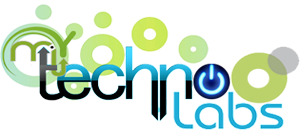Data acquisition involves collecting signals from sources of measurement, storing them in digital format and presenting them on a PC. Choose from several technologies for data acquisition on personal computers, such as PCI, PCI Express, PXI, PXI Express, PCMCIA, USB, wireless and Ethernet. Automate the recording and measurement of data, and feed it to data analysis applications. Build a basic data acquisition system using transducers, sensors, signals, signal conditioning equipment, data acquisition hardware, device driver software and application software.
Instructions
1. Select a measuring instrument called a transducer to measure phenomena such as the room temperature, intensity of a light source or force applied to an object. For example, obtain a thermocouple or thermistor to measure temperature; or use a photo sensor to measure light intensity.
Instructions
1. Select a measuring instrument called a transducer to measure phenomena such as the room temperature, intensity of a light source or force applied to an object. For example, obtain a thermocouple or thermistor to measure temperature; or use a photo sensor to measure light intensity.
2. Find out the requirements of the transducer to convert the physical phenomenon into a measurable signal. Signals are classified as analog and digital signals. Analog signals take any value in a continuous range whereas digital signals take distinct values only. Voltage, temperature, pressure and sound are analog signals with the following characteristics: level or amplitude, shape (such as sine, cosine or sawtooth waves) and frequency. Each of these attributes can be measured on the transducer. Digital signals take two values, a low and a high. The low and high values are defined by a certain value of the phenomenon. Learn to measure the rate of a digital signal, or how many times the signal transitions between low and high within a unit of time, using your transducer screen.
3. Learn to select appropriate hardware for signal conditioning. Connecting the transducer to the data acquisition device may be too dangerous or not give accurate results. Use signal conditioning equipment, such as an amplifier, to smooth out the signal amplitude. You may also use a multiplexer to multiplex the signal with other signals. Multiplexing is a technique where two or more signals are sent over the same transferring line turn by turn.
3. Learn to select appropriate hardware for signal conditioning. Connecting the transducer to the data acquisition device may be too dangerous or not give accurate results. Use signal conditioning equipment, such as an amplifier, to smooth out the signal amplitude. You may also use a multiplexer to multiplex the signal with other signals. Multiplexing is a technique where two or more signals are sent over the same transferring line turn by turn.
4. Select data acquisition hardware. This is the equipment that interfaces between the computer and the incoming signals. Connect the transducer or signal conditioning hardware to the data acquisition hardware following the instructions in the user manual. Data acquisition devices provide analog and digital input or output, counters, timers or a combination of these functions. Familiarize yourself with the available data acquisition devices for the desktop computer platform.
5. Install the driver software for the data acquisition device using the instructions that came with the package. Device drivers are programs that communicate with the particular hardware device for which they are written; they provide an interface with the main computer.
6. Install the application software on your data acquisition platform computer. Buy a license for a vendor software package or have a team develop a custom-made program specifically tailored for the data. The application will store and process the digitized data.

No comments:
Post a Comment